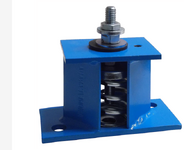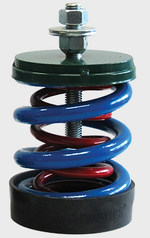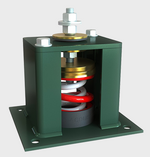StrLamp
Structural
- Jan 21, 2022
- 14
Hi Everyone,
The consultant has provided the following specification (see attached) for the attachment of mechanical equipment: they said it must be limited to the lateral force-resisting elements only. For example, in a steel building with OWSJ and a steel deck, they do not allow components to be attached to them.
In my understanding, these gravity members should remain intact during an earthquake; therefore, connecting any units to them should be acceptable.
Also, they have mentioned that any unit resting on vibration isolation should include a snubber as well. Why is this a requirement? I assume that spring vibration isolators may resonate with seismic forces, which is why they are asking for a snubber to be installed. Is this an explicit requirement?
I was not sure where I should direct this question, as seismic restraints are typically handled by the mechanical engineer in most cases.
Thank you,
The consultant has provided the following specification (see attached) for the attachment of mechanical equipment: they said it must be limited to the lateral force-resisting elements only. For example, in a steel building with OWSJ and a steel deck, they do not allow components to be attached to them.
In my understanding, these gravity members should remain intact during an earthquake; therefore, connecting any units to them should be acceptable.
Also, they have mentioned that any unit resting on vibration isolation should include a snubber as well. Why is this a requirement? I assume that spring vibration isolators may resonate with seismic forces, which is why they are asking for a snubber to be installed. Is this an explicit requirement?
I was not sure where I should direct this question, as seismic restraints are typically handled by the mechanical engineer in most cases.
Thank you,





